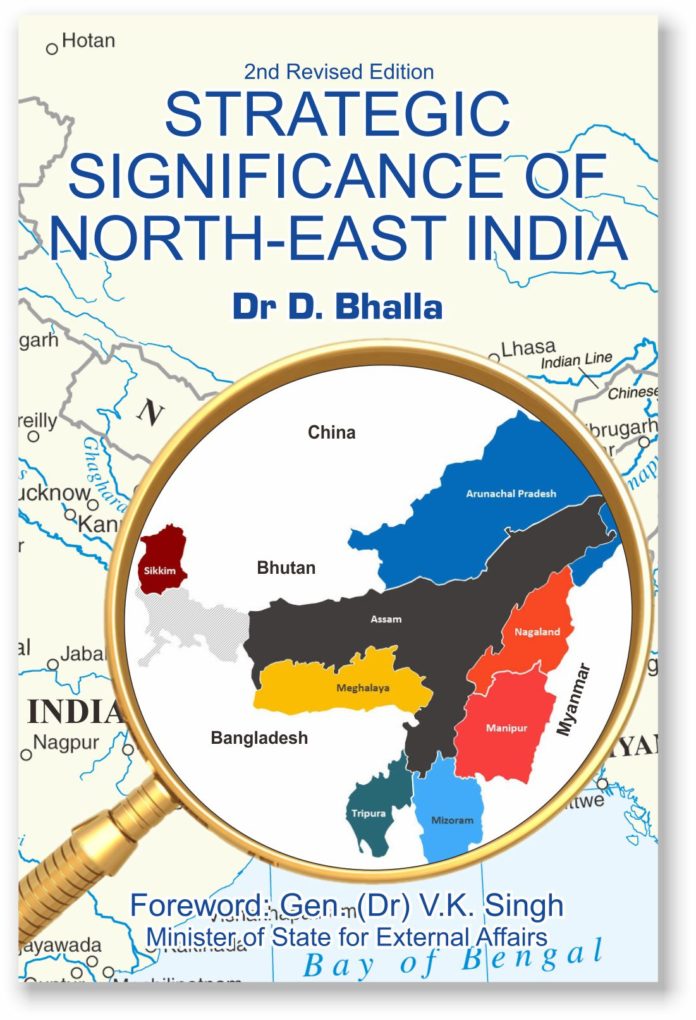North Eastern part of India carries more importance than many other border states. For this reason, India has a Ministry of Development of the North Eastern Region (DONER) to cater for development of the north-eastern states of Arunachal, Assam, Manipur, Meghalaya, Mizoram, Nagaland, Sikkim and Tripura which enjoy special status by way of non-lapsable development funds, liberalized norms for funding and Central assistance, special economic packages and tax exemptions. The fact that the states like Arunachal Pradesh border with Tibet, Myanmar and Bhutan, brings out how sensitive some of the states are.
With a long history of political unrest, neglect, under-development and insurgency, all issues impacting the security of the country and the well being of North East, deserve to be examined by all those who have a hand in formulating policy, governance, development, social upliftment and conflict resolution.
North-East India is the gateway to South-East Asia and beyond. It is India’s land-bridge to Myanmar. Its proximity to international markets to both South-Western China and South-East Asia, makes this region a potentially important base for foreign and domestic investors.
China remains a major source of worry with its pro-active plans to increase its influence in the region. The vulnerability of the Siliguri Corridor is a case in point. China’s overtures to Bhutan can have a profound effect on the security calculus in case the Bhutan-China borders are altered. Bangladesh, Sri Lanka and Nepal also require constant attention. Myanmar holds the key to peace and security on the Indian side of the border.
Dr. D. Bhalla has had long experience of governance in Nagaland and in the Central government. He has a deep understanding of the myriad geo-strategic, political, economic and cultural issues that together make North Eastern states a potential powerhouse or a region needing attention, whichever way the reader wishes to look at them.
There is no doubt our foreign policy and relations with neighbouring countries will have a profound impact on the future of North East primarily because the neighbouring countries have common borders and affinities with one or more states. The physical location of northeastern states makes it imperative that they develop in consonance with their neighbours.
What comes out very succinctly in the book is that, with the ‘Look East Policy’ which is now the ‘Act East Policy’, the region will play a dominant role in contributing to the country’s linkages with South East Asia and, subsequently, change perceptions from being a neglected, misgoverned, tribal region into a veritable ‘soft power’.
The North-East region has an equal, if not more important, stake and role in this comprehensive endeavor. The involvement of the regional chief ministers in interactions with neighbouring countries is important.
Building the necessary infrastructure to connect the ports of Chittagong, Sittwe and Haldia with the region can provide a big boost to the entire region. Free movement of goods through Myanmar and Bangladesh will enable the landlocked North-East region access to the Bay of Bengal.
The North-East Region is endowed with human and a variety of natural resources such as uranium, coal, hydro-power, forests, oil and gas. With highly fertile land, the North-East region is the world’s largest producer of tea as well. It is a vibrant source of energy, oil, natural gas and limestone supplemented by the perennial water systems of the Brahmaputra and its tributaries. It’s geo-strategic location and natural resources also makes it a potential powerhouse of India for development and progress.
There is currently comparative peace and calm in the North-East region. Ethnic turmoil in the North-East region can be attributed to the anxiety to preserve ethnic identities. There is no doubt that growth and prosperity are the remedies for insurgencies in the North-East. A major effort is required to convert the inherent strengths of the region into a powerful tool for our economic progress. The efforts of the ministries dealing with defence, trade and commerce, transport and communications, tourism and culture, finance and planning must be synergised to ensure that plans and programmes are geared towards result-oriented objectives.
But there are caveats and the author has laid down road map for the future blossoming of northeastern states. His recommendations carry the wisdom of someone who has dealt hands-on with multifarious problems afflicting the North East.
While the basic facts about North East remain unchanged, Dr. Bhalla clearly has the knack of sifting the chaff from the grain. The geography, demography, and economic potential have all been presented with the author’s own personal attention to essentials.
It has been said wisely that those who do not remember the past are doomed to repeat it. To that end, the book is a must-read. You may not come across a better-encapsulated narration of history of each state as in this book.
The author’s data and statistics are unmatchable in their integrity and analyses. He is an experienced writer with a number of excellent books to his credit.
Tourism is one of the important keys to development of North East. One could not have a better scholar than Dr. Bhalla to dwell on this aspect simply because he is an authority on tourism in North East and has two published works on this topic to his credit.
While there are many published works on north-eastern states available in libraries, none is more contemporary than this work. Conflict resolution itself has reached a stage where North East is, hopefully, about to usher in an era of peace and prosperity. While political stability will always demand attention in a very politically aware population; international developments and other socio-economic aspects are undergoing changes, which make earlier works dated.


















